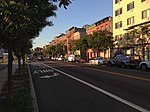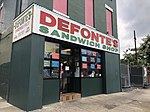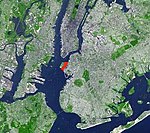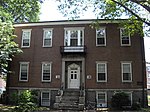Mary A. Whalen (tanker)
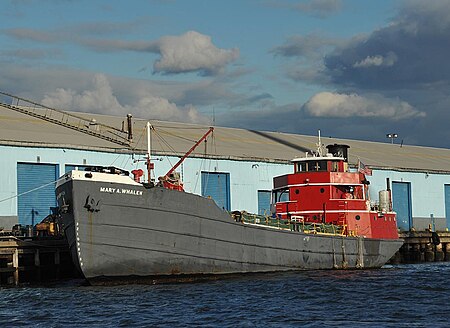
Mary A. Whalen, known as the S.T. Kiddoo from 1938 to 1958, is a historic oil tanker located in the Red Hook neighborhood of Brooklyn, Kings County, New York. She is the home of the non-profit PortSide NewYork, and the group runs programs aboard her. She was built in 1938 by the John J. Mathis Company, of Camden, New Jersey Hull #124, and measures 172 feet long. She is a rare surviving example of a "bell boat," a ship controlled from the engine room with telegraph signals sent from the bridge. The tanker shipped various fuel products along East Coast and was at center of United States v. Reliable Transfer Co., a pivotal 1975 Supreme Court decision in maritime law after she ran aground in Rockaway Inlet in 1968. She was in active service until 1994.: 3, 11 She was listed on the National Register of Historic Places in 2012.
Excerpt from the Wikipedia article Mary A. Whalen (tanker) (License: CC BY-SA 3.0, Authors, Images).Mary A. Whalen (tanker)
Brooklyn-Battery Tunnel, New York Manhattan
Geographical coordinates (GPS) Address Nearby Places Show on map
Geographical coordinates (GPS)
| Latitude | Longitude |
|---|---|
| N 40.684722222222 ° | E -74.007777777778 ° |
Address
Brooklyn-Battery Tunnel
Brooklyn-Battery Tunnel
10275 New York, Manhattan
New York, United States
Open on Google Maps

